Introduction
There are 18 native amphibians in southern Florida (Figures 2 and 5). Amphibians are found in virtually all habitats from pine forests to sawgrass marshes to mangrove estuaries, and they can become extremely abundant locally. Amphibians are predators on arthropods and some small vertebrates and are prey to many other animals (Figure 1). These trophic interactions and the high abundance of amphibians in southern Florida make them a vital part of the Everglades ecosystem.
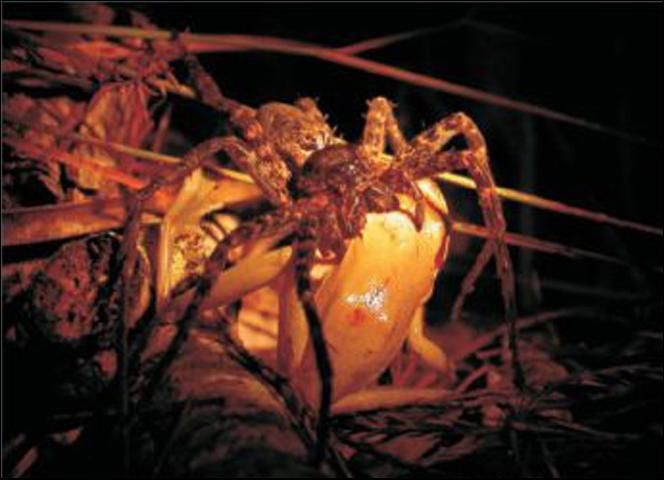
Credit: Brian Jeffery, 2003
Declines in amphibian populations have been documented by scientists worldwide from many regions and habitat types (Alford and Richards 1999). No single cause for declines has been demonstrated, but stressors such as acid precipitation, environmental contaminants, non-native predators, disease agents, parasites, and the effects of ultraviolet radiation have all been suggested. Because of their susceptibility to these and other stressors, amphibians are important indicators of ecosystem health (Welsh and Ollivier 1998).
Currently, hydrologic restoration in southern Florida is beginning under the Comprehensive Everglades Restoration Plan (CERP http://www.evergladesplan.org), which includes more than 68 projects ranging from removing canals to creating alternative water-storage areas. The goals of the plan include increasing the spatial extent and enhancing the quality of natural areas, and improving the abundance and diversity of native plants and animals. An important component of the plan is an adaptive assessment process that will be used to assess the performance of the plan and recommend changes as necessary. The community of amphibians in the Everglades was chosen as an important group for this assessment process because of the sensitivity of amphibians to changes in the environment.
Amphibians should be excellent indicators of the success of the Everglades Restoration, but a clear understanding of how amphibians will respond to changes in the environment is required. In a collaborative effort, the US Geological Survey (USGS) and the University of Florida are currently conducting a research program into the use of amphibians as ecosystem restoration indicator species. This program consists of coordinated research projects occurring across spatial and temporal scales throughout the Everglades ecosystem in Everglades National Park, Big Cypress National Preserve, and the Water Conservation Areas. The goal is to develop the tools needed to predict and monitor changes to amphibian communities due to restoration.
Local Scale, Single Species
As managers design and implement individual projects of CERP, impacts to indicator species over relatively small areas must be evaluated. Managers will require predictive tools and methods of monitoring that can detect change quickly and are applicable across the Everglades system. At this scale, the effects of restoration on population size, health, behavior, and reproduction of individual indicator species could be used to judge restoration success. Research at the local scale consists of perfecting methods to study and monitor amphibians in the field and using these methods to ask appropriate questions.
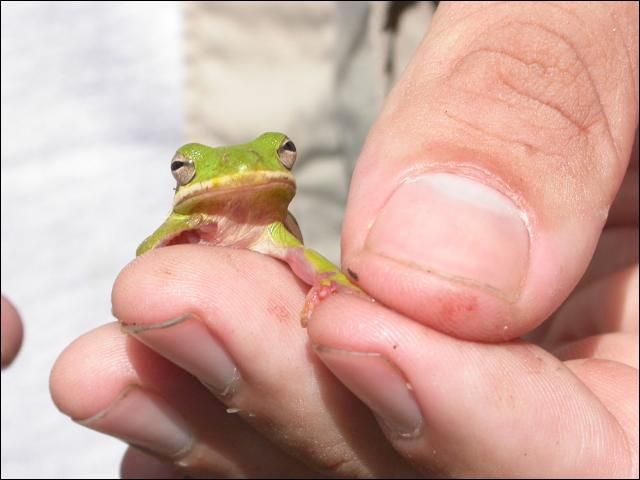
Credit: Brian Jeffery, 2003
The green treefrog (Hyla cinerea) and squirrel treefrog (Hyla squirella) were the most commonly observed amphibian species during our recent inventories of Everglades National Park and Big Cypress National Preserve. These species were found in all habitats that we surveyed (Figure 3). While occurring together in many cases, the relative density of each species differs depending on local habitat conditions. The health and density of these species are indicators of both the health of lower trophic levels that they feed upon as well as their predators. We are using capture-mark-recapture techniques to examine movement and survival patterns of both species simultaneously in Big Cypress National Preserve. We are using multistate models to determine the probability that a treefrog will survive and move from one habitat to another at different water levels. These models take into account current and past water depths and temperature and allow us to calculate a probability of dispersal for each species under these conditions. Armed with this information, we are developing a predictive model of treefrog populations under different hydrologic scenarios. The objectives are to develop further our methods as a modeling and monitoring tool across all Everglades habitats.

Credit: Brian Jeffery, 2004
Regional Scale, Multiple Species
The effects of restoration projects also can be measured on a regional (such as a habitat type or management unit) scale. In some instances, effects may be difficult to measure and may require the use of several similar species collectively to measure the success of restoration.
Another major impact on amphibians in the Everglades may be the introduction of invasive species. We are using similar capture-mark-recapture methods to determine better the effect of the Cuban treefrog (Osteopilus septentrionalis) on native treefrog populations. Cuban treefrogs have been shown to be a predator of at least six species of native frogs and toads (Meshaka 2001) and at least one native snake (Maskell and others, 2003), and the Cuban treefrog has become established in natural areas within Everglades National Park. We monitored populations of both native and the introduced species using capture data from artificial refugia (Figure 4). After one year of monitoring, all Cuban treefrogs captured were removed from the area, and the recovery of native frogs was monitored. Results from this study indicated that Cuban treefrogs can cause severe reductions in native treefrog abundance and survival in areas where Cuban treefrog abundance is high. This estimation approach could also be applied to other stressors of amphibian populations, including alteration of the hydrologic cycle.
Landscape Scale, Communities
CERP managers will ultimately require knowledge concerning the success of restoration across the entire Everglades system. This will require not only methods that are applicable to all habitats and areas but to many species or communities as well.
Amphibians are present in all habitats and under all hydrologic regimes in the Everglades. The species present and occupancy rates—the proportion of an area, or habitat, occupied (PAO) by a particular species—differ greatly across those gradients. These differences are due to hydropattern, vegetation, and other environmental factors. The combination of species composition and proportion of each habitat occupied at a given time form unique communities defined by those environmental factors. Therefore, if these communities can be reliably defined and measured, the Everglades restoration success can be evaluated, restoration targets can be established, and restoration alternatives can be compared.
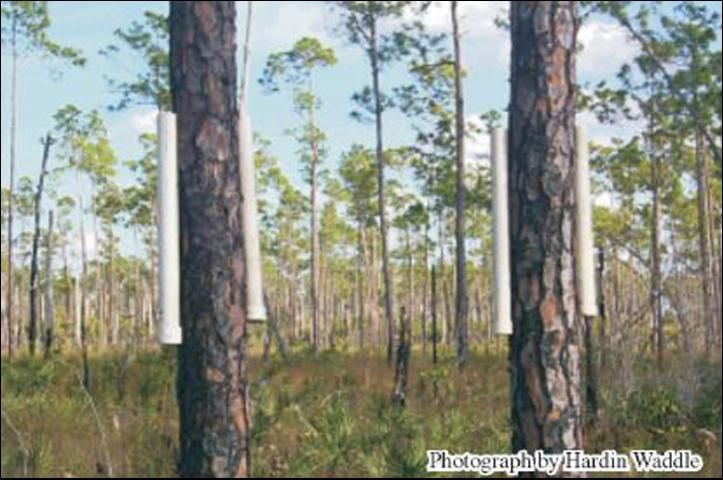
Credit: Hardin Waddle, 2002
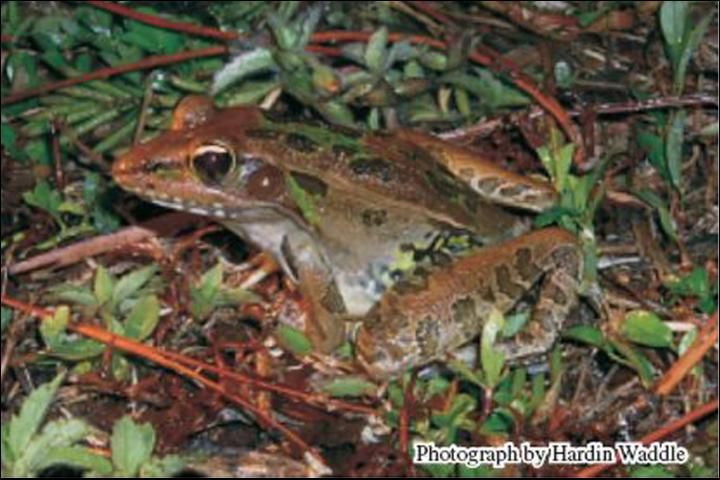
Credit: Hardin Waddle, 2002
In Everglades National Park and the adjacent Water Conservation Areas, we have begun a large scale study to determine the PAO by each amphibian species across habitats defined by hydropattern (the number of days of inundation each year). The PAO method estimates the abundance of sites at which each species occurs based on the capture results of several visits to each site (MacKenzie and others, 2002). This method takes into account that some species are more difficult to detect, given that they are present, than others. This sampling is done along a hydrologic gradient from very long hydroperiod sloughs to the extremely short hydroperiod rocky glades of eastern Everglades National Park. The outcome of this research will be community profiles relating the PAO of several key amphibian species to the ecological community along this gradient. This information can then be used by managers to make predictions and monitor success of CERP (Figure 6).
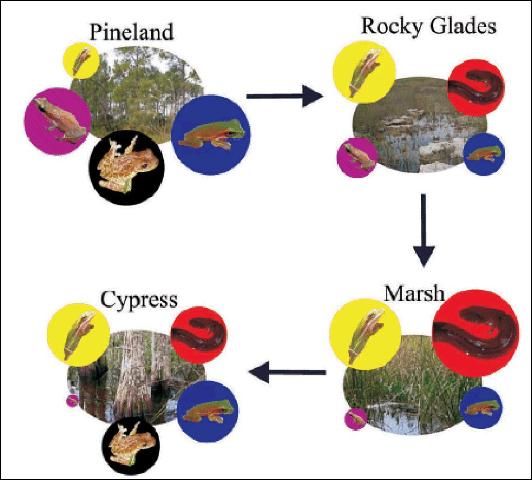
Credit: Hardin Waddle, 2004
Another way we are using this modeling approach is to determine the impact of off-road vehicle (ORV) use on amphibians in Big Cypress National Preserve (Figure 8). We first developed an index of ORV use using geographic information systems (GIS) (Figure 7). We then tested the PAO model using simulated selection techniques to determine if ORV use effected the distribution of amphibians within the Preserve. Results indicated that some species seem to be strongly negatively associated with ORV use, some seem to be strongly positively associated, and many do not seem to be affected by ORV use. This is one example of an application of this model to test if landscape scale processes affect the distribution of amphibian species in southern Florida. Other factors, such as habitat and hydroperiod, also can be included in the model to determine the suite of factors that best explains the distribution of the species.

Credit: Hardin Waddle 2004; Adapted from Welch, et. al 1998
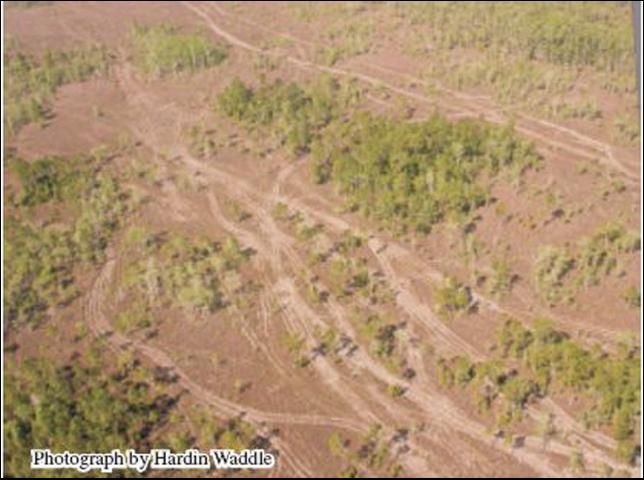
Credit: Hardin Waddle, 2004
Amphibians and Everglades Restoration
During the Everglades restoration, managers will require predictions about how proposed changes might affect indicator species and monitoring data to ensure that success has occurred. Methods will be required from small spatial scales to landscapes and on single species to communities. By describing the current distribution and abundance of amphibians across the Everglades and better understanding the relationship between hydrology and amphibian populations, we will be able to make predictions about the effects of the Everglades restoration. Monitoring of amphibians using the techniques we are developing will allow the testing of predictions and measurement of restoration success. Both the USGS Greater Everglades Priority Ecosystem Science (PES) Program and the US National Park Service CESI program have supported this research.
References Cited
Alford, R.A., and Richards, S.J. 1999. Global amphibian declines: A problem in applied ecology: Annual Review of Ecology and Systematics, 30, 133–165.
MacKenzie, D.I., Nichols, J.D., Lachman, G.B., and others. 2002. Estimating site occupancy rates when detection probabilities are less than one. Ecology, 83, 2248–2256.
Maskell, A J., Waddle, J.H., and Rice, K.G. 2003. Osteopilus septentrionalis: Diet. Herpetological Review, 34, 137.
Meshaka, W.E. 2001. The Cuban Treefrog in Florida. Gainesville: University of Florida Press.
Welch, R., M. Madden, and R. F. Doren. 1999. Mapping the Everglades. Photogrammetric Engineering and Remote Sensing, 65, 163–170.
Welsh, H.H J., and Ollivier, L.M. 1998. Stream amphibians as indicators of ecosystem stress: A case study from California's redwoods. Ecological Applications, 8, 1118–1132.